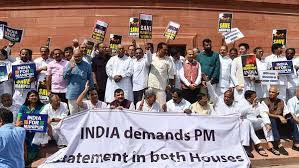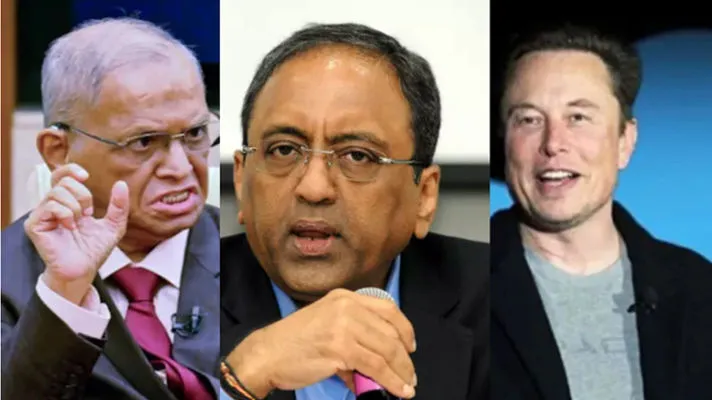A “no-confidence motion” or “motion of no confidence” is a parliamentary procedure used in many countries to test the support or lack of support for the government. It is a motion initiated by the opposition or sometimes by members of the ruling party itself, expressing that they no longer have confidence in the current government or a specific government minister. If the motion is passed by a majority vote in the legislature, it indicates that the government has lost its legitimacy to govern and may result in the government’s resignation or the calling of new elections.
History of No-Confidence Motions:
The concept of a no-confidence motion can be traced back to the British Parliament and its long-standing tradition of holding the government accountable. The practice of expressing a lack of confidence in the government dates back to the 17th century. However, the first recorded use of a formal no-confidence motion took place in the United Kingdom in the 19th century.
In the early 19th century, the political landscape in Britain was characterized by major shifts and realignments, particularly during the reign of King William IV and the Victorian era. During this time, parliamentary debates became more organized, and the practice of submitting motions to challenge the government gained traction.
History of No-Confidence Motions in India:
The concept of no-confidence motions in India finds its roots in the country’s parliamentary system, which was heavily influenced by the British model during the colonial period. India gained independence from British rule on August 15, 1947, and adopted a parliamentary democracy, where the government is responsible and accountable to the elected representatives in the Parliament.
1. 1963: The first significant instance of a no-confidence motion in India occurred in 1963 when the then Prime Minister Jawaharlal Nehru faced a motion after the Indo-China border conflict. Despite strong opposition, the government managed to survive the vote.
2. 1979: In 1979, the government led by Prime Minister Charan Singh faced a no-confidence motion, and he resigned before the motion could be put to vote. This led to the dissolution of the Parliament and paved the way for fresh elections.
3. 1990: The 1990s were a turbulent period in Indian politics, with frequent changes in governments. In 1990, Prime Minister Vishwanath Pratap Singh’s government fell after he decided to implement the Mandal Commission’s recommendations for job reservations, leading to widespread protests.
4. 1999: In April 1999, the ruling coalition led by Prime Minister Atal Bihari Vajpayee faced a no-confidence motion after the government lost the support of one of its key allies, the AIADMK. However, the government managed to prove its majority and continued to govern.
5. 2003: In 2003, the ruling coalition led by Prime Minister Atal Bihari Vajpayee again faced a motion of no-confidence brought by the opposition parties. The government comfortably defeated the motion, reaffirming its majority.
6. 2008: In July 2008, the United Progressive Alliance (UPA) government led by Prime Minister Manmohan Singh faced a no-confidence motion initiated by the Left parties, who withdrew their support over the Indo-US civil nuclear deal. The government successfully won the motion.
7. 2018: In July 2018, the NDA government led by Prime Minister Narendra Modi faced a no-confidence motion brought by the opposition parties, led by the Telugu Desam Party (TDP), who withdrew their support over the special category status for Andhra Pradesh. The government defeated the motion with a comfortable majority.
On July 20, 2018, the Narendra Modi-led National Democratic Alliance (NDA) government faced a motion of no confidence in the Lok Sabha (the lower house of India’s Parliament). The motion was brought by the opposition parties, mainly the Telugu Desam Party (TDP) and the Yuvajana Sramika Rythu Congress Party (YSRCP), over issues related to the special category status for Andhra Pradesh.
The TDP had withdrawn its support from the NDA earlier that year, citing dissatisfaction with the central government’s response to their demands for special status to Andhra Pradesh. The YSRCP, too, supported the motion, as it was demanding similar special category status for the state.
During the no-confidence motion debate, Prime Minister Narendra Modi defended his government’s actions and policies. He highlighted the achievements of the government and reiterated their commitment to the development of the country. The opposition parties, on the other hand, criticized the government’s handling of various issues and raised concerns over issues such as unemployment, agrarian distress, and economic policies.
The no-confidence motion was put to vote on July 20, 2018, and the Narendra Modi-led government comfortably defeated the motion. The government received the support of 325 Members of Parliament (MPs), while 126 MPs voted in favor of the motion.
The outcome of the no-confidence motion reaffirmed the NDA government’s majority in the Lok Sabha and allowed them to continue governing for the remainder of their term.
What is a ‘whip’?
In politics, a “whip” refers to a party official whose primary role is to ensure party discipline and unity among its members in the legislature. The whip’s job is to communicate and enforce the party’s position on important votes and debates, making sure that the party’s elected representatives (Members of Parliament or MPs) attend and vote in line with the party’s stance.
A “three-line whip” is a strong and rigid form of instruction issued by the party to its MPs, leaving little room for dissent or disobedience. When a three-line whip is imposed, it means that the MPs are obligated to vote according to the party’s position, and their attendance is mandatory during the scheduled parliamentary session. Party members who fail to comply with a three-line whip risk facing disciplinary action or potential repercussions from the party leadership.
The term “three-line whip” originates from the practice of underlining or marking important instructions in documents three times to highlight their significance. In the context of politics, it denotes that the party leadership considers the upcoming vote as crucial and expects absolute loyalty and support from its members. As a result, it is a powerful tool used by parties to ensure voting discipline on critical issues.























